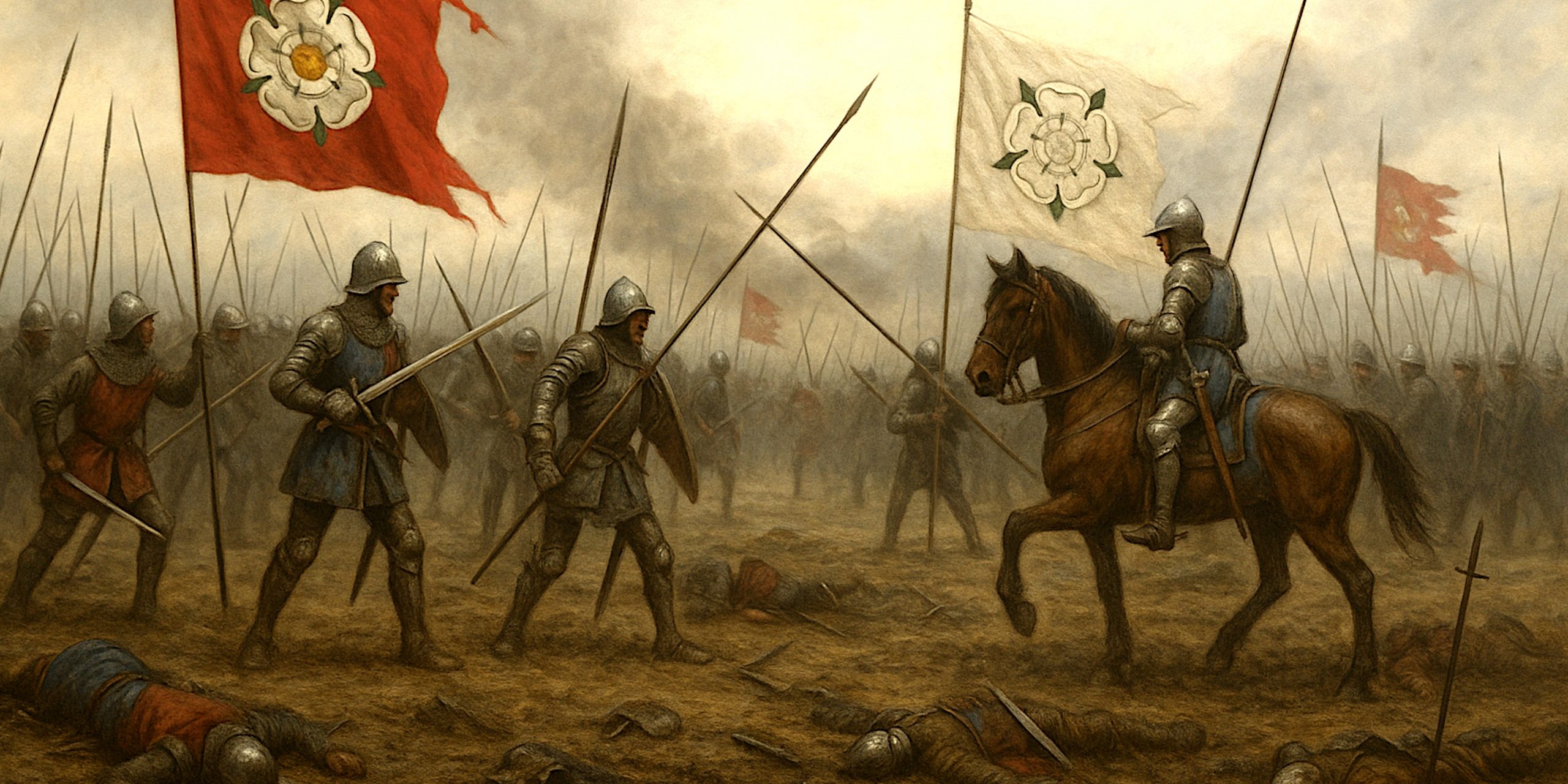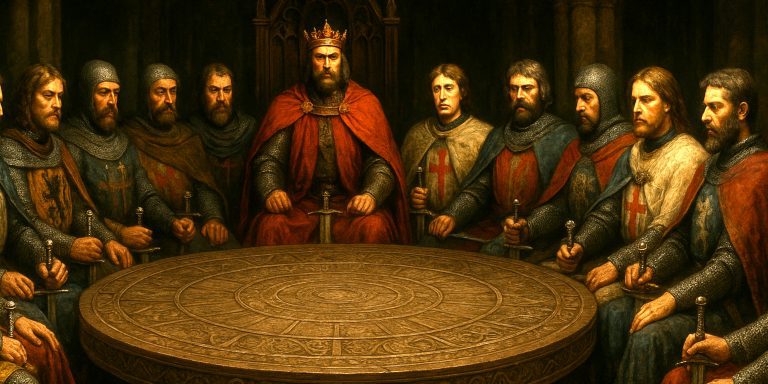
The Wars of the Roses was not a single conflict but a tangled series of civil wars that tore England apart between 1455 and 1487. It was a dynastic struggle between two rival branches of the royal House of Plantagenet: the red rose of Lancaster and the white rose of York. The conflict was as much about ambition, betrayal, and legitimacy as it was about bloodlines. By the time it ended, a new dynasty, the Tudors, would rise from the ashes of both houses.
The following timeline traces the key moments, battles, and political manoeuvres that defined this turbulent age.
Timeline of the Wars of the Roses
| Year | Event | Description |
|---|---|---|
| 1455 | First Battle of St Albans | The opening clash. Richard, Duke of York, defeats Lancastrian forces and captures King Henry VI. The Yorkist claim is violently declared. |
| 1458 | Love Day | A ceremonial reconciliation in London arranged by Queen Margaret of Anjou. The peace is shallow and soon collapses. |
| 1459 | Battle of Blore Heath | Yorkist victory under the Earl of Salisbury against a larger Lancastrian army, showing the country’s slide back into war. |
| 1459 | Battle of Ludford Bridge | Yorkist forces flee to Calais when the royal army advances. York’s cause seems broken. |
| 1460 | Battle of Northampton | The Yorkists capture Henry VI again. The Act of Accord names Richard of York as heir, disinheriting Prince Edward. |
| 1460 | Battle of Wakefield | A devastating Lancastrian victory. Richard of York is killed, his head displayed on Micklegate Bar, York, wearing a paper crown. |
| 1461 | Battle of Mortimer’s Cross | Edward, Earl of March (later Edward IV), wins a crucial victory, helped by a parhelion phenomenon interpreted as divine favour. |
| 1461 | Second Battle of St Albans | Margaret of Anjou’s forces rescue Henry VI but lose strategic control of London soon after. |
| 1461 | Battle of Towton | The largest and bloodiest battle on English soil. Edward IV’s triumph ends Lancastrian dominance. He is crowned king. |
| 1464 | Battle of Hexham | Yorkist victory ends organised Lancastrian resistance in the north. Henry VI goes into hiding. |
| 1469 | Battle of Edgecote Moor | Rebels loyal to Richard Neville, Earl of Warwick, defeat Edward IV’s supporters. The King is temporarily captured. |
| 1470 | Henry VI Restored | Warwick, the “Kingmaker,” restores Henry VI in a sudden reversal of fortunes known as the Readeption. |
| 1471 | Battle of Barnet | Edward IV returns from exile, defeats and kills Warwick. The Yorkist hold on power is re-established. |
| 1471 | Battle of Tewkesbury | Final Lancastrian defeat. Prince Edward of Westminster is killed, and Queen Margaret is captured. Henry VI is murdered in the Tower. |
| 1478 | Death of Clarence | George, Duke of Clarence, brother to Edward IV, executed (allegedly drowned in wine). The York dynasty begins to devour itself. |
| 1483 | Death of Edward IV | His young son Edward V is deposed by his uncle Richard, who becomes Richard III. The Princes in the Tower vanish. |
| 1485 | Battle of Bosworth Field | Henry Tudor’s army defeats Richard III. Richard is killed in battle, ending Plantagenet rule. Henry becomes Henry VII. |
| 1487 | Battle of Stoke Field | The final battle of the Wars of the Roses. Tudor forces defeat Yorkist rebels supporting the pretender Lambert Simnel. The Tudor dynasty is secure. |
Aftermath and Legacy
The Wars of the Roses ended not with peace, but with exhaustion. The feudal nobility had been decimated, and royal authority was redefined. Henry VII’s victory at Bosworth and subsequent marriage to Elizabeth of York symbolically united the warring houses, creating the Tudor rose.
The war’s legacy lingers in English consciousness: its betrayals, lost heirs, and shifting loyalties became the substance of national myth and Shakespearean tragedy. Beyond its drama, it was also the crucible from which modern England emerged, stronger, centralised, and wary of noble power.
The Seven Swords Takeaway
The Wars of the Roses was more than a dynastic squabble; it was a reconfiguration of power. It ended the medieval age of feudal barons and began the rise of a modern monarchy. Every battle, from St Albans to Bosworth, reflected a deeper struggle over legitimacy, governance, and identity that would shape England’s destiny for centuries.
Watch the documentary:



